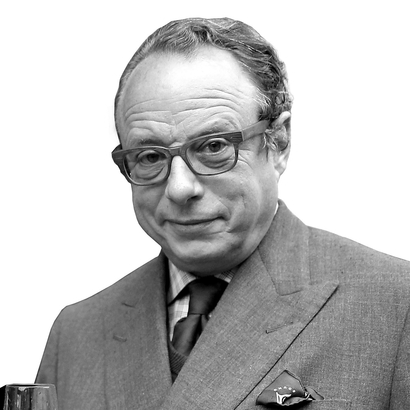After 25-odd years of photographing le Bal des Débutantes at the behest of AIR MAIL’s loyally committed co-editor Graydon Carter, I wonder if he should be so committed. Or whether, given my encouragement and complicity, we might both be candidates for an asylum attended by debutantes. Inasmuch as my enduring presence raises questions, I’ve become an unquestionable fixture at le Bal.
The uninitiated usually ask a more conspicuous question: Why does le Bal survive, let alone thrive and manage to outdo itself each year, in a Zeitgeist seemingly infertile to such tradition? I scratch my head while heading off to Paris every Thanksgiving for another round. The answer always surprises me upon arrival.
One begins at the hotel that attends to all of le Bal’s needs, from rehearsals and waltz lessons to the big night itself, with a crack concierge, inconceivably fancy cuisine, and impeccable lodgings. Overlooking the Eiffel Tower from the right bank, the Shangri-La hotel maintains the feeling of an hôtel particulier, befitting its origins as the private residence of Prince Roland Napoleon Bonaparte, great nephew of the emperor; father of Marie, Princess George of Greece and Denmark; and the last male of his Napoleonic line. Appropriate enough for a coming-out party.
Ophélie Renouard, the founder and sole proprietor of le Bal, spends the entirety of each year cultivating, on every continent except Antarctica, exceptional debutante girls and lucky cavalier boys to escort them. Her specific criteria and formulas are known to her alone, but Ophélie’s selections suggest that grace, merit, and good manners are essential factors. There are always the obvious titles and tiaras, and parentage is still taken into account, but nobody can pay admission to qualify for le Bal. (Families with a charitable bent are encouraged to donate to the W.C.K.—the Washington, D.C.–based World Central Kitchen—which feeds victims of disaster, and to the Association of Cardiology Research from Fetus to Adult, a cardiological enterprise of the Parisian Necker–Enfants Malades Hospital.)
The girls’ precocious achievements carry more weight in recent years: at le Bal 2015, American Olivia Hallisey had won the grand prize at the Google Science Fair for inventing a test for the Ebola virus at age 16; in 2013, Lauren Marbe, the daughter of a British black-cab driver, had an I.Q. exceeding Einstein’s; and in 2023, Norwegian chanteuse Angelina Jordan had fame, record contracts, and gazillions of “followers.”
This year, Jasmine Yen, an accomplished singer herself, is the daughter of Chinese action hero Donnie Yen. Vaunted Chinese director Zhang Yimou, who has both won an Oscar and been nominated for the Palme d’Or, brought his son, Ethan, who studied film and production at U.S.C., as a cavalier to escort an American, Louisa Dub, and will bring his own daughter as a debutante next year. Parents treasure that, over the course of a long, intense, and luxurious weekend in Paris, their progeny quickly make tight connections with a truly diverse group of contemporaries.
Youth and beauty play their part, but once the hairdressers, jewelers, and couture houses (Dior, Carolina Herrera, Chanel, Elie Saab, Valentino, Oscar de la Renta, and so forth) have lavished their attentions on the debutantes, they are impossibly dazzling. The designers compete to dress certain girls, and vice versa.
Jewelers of recent years—Alex Fan, of V Muse, and Vivienne Jia—loan pieces from their archives, so all the necklaces, earrings, and tiaras have a rich, historical provenance. They are truly amazing to behold, and I say this as someone who once ignorantly mistook Marella Agnelli’s massive ruby necklace for Kenny Lane costume stuff while shooting her for W magazine. I pay attention now.
The jewels make for phenomenally beautiful pairings with the debutantes’ own exquisite qualities: a rare 1940s Boivin starfish made of gold rubies and amethyst was affixed to Anya Embiricos, of the Greek shipping family; le Bal’s first Pakistani debutante, Hannah Husain, wore an emerald-and-diamond necklace that Clementine Churchill wore at the 1953 Nobel ceremony, where she accepted the literature prize on behalf of her husband, Winston. Sometimes the pairings are quite literal: Royal Princess Hélène d’Orléans was paired with the Orléans tiara, and her brother wore an Orléans brooch.
In hindsight, perhaps the annual documentation of le Bal won’t be seen as a crazily loyal commitment on Graydon’s part. It may be interpreted as foresight to have surveyed, so devotedly, such an anomalous event of keen anthropological interest.
Jonathan Becker is a New York–based photographer











